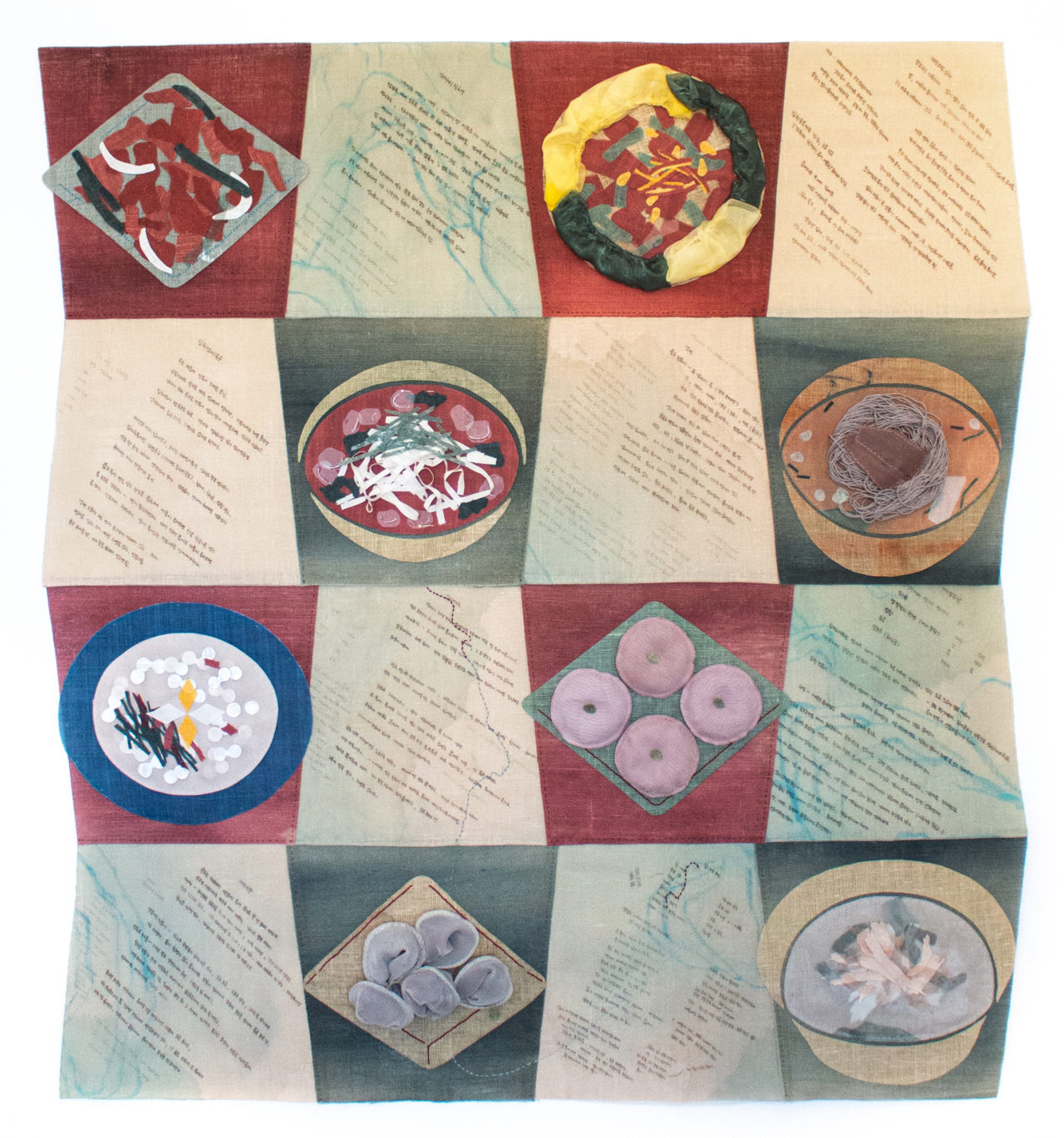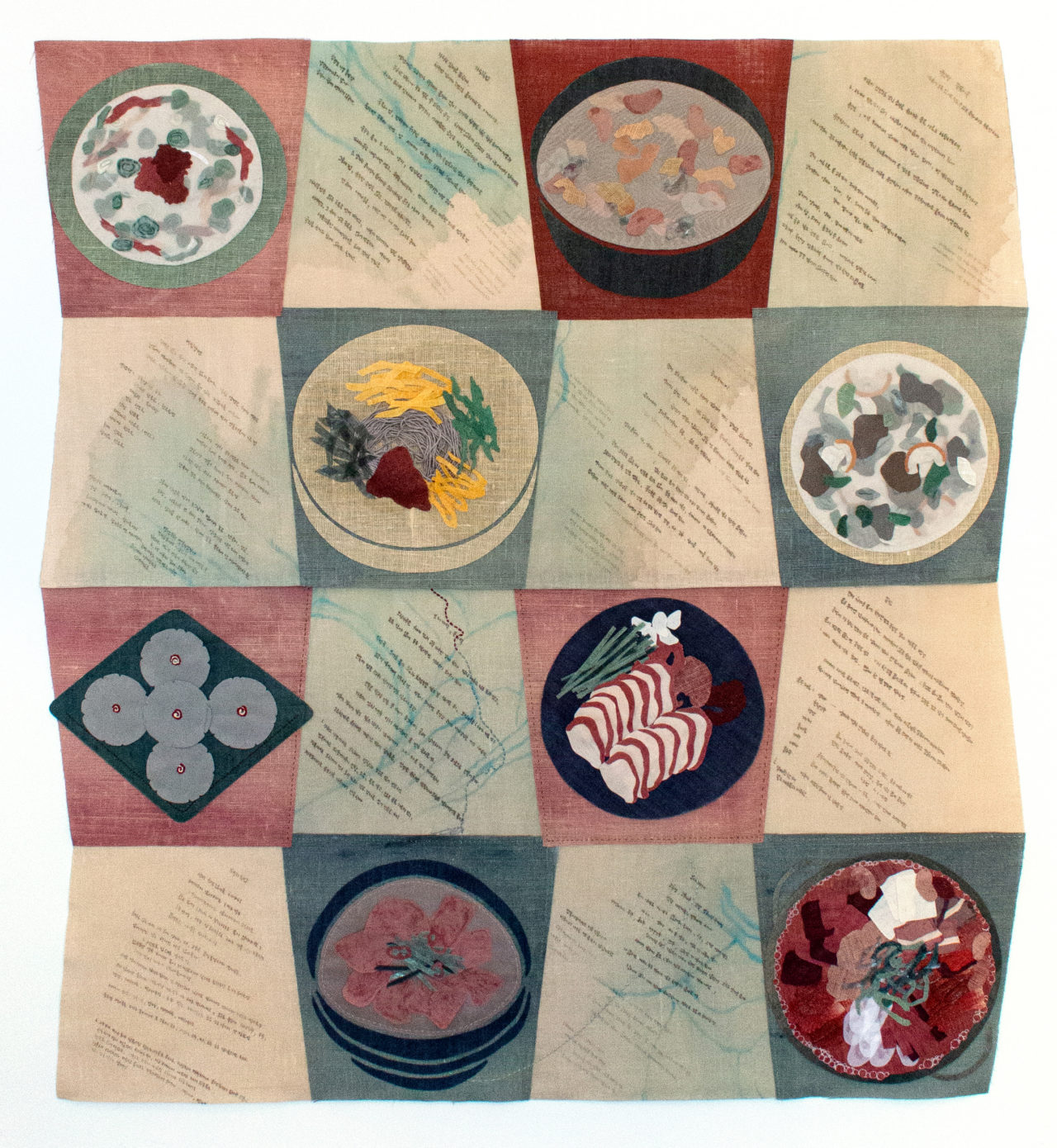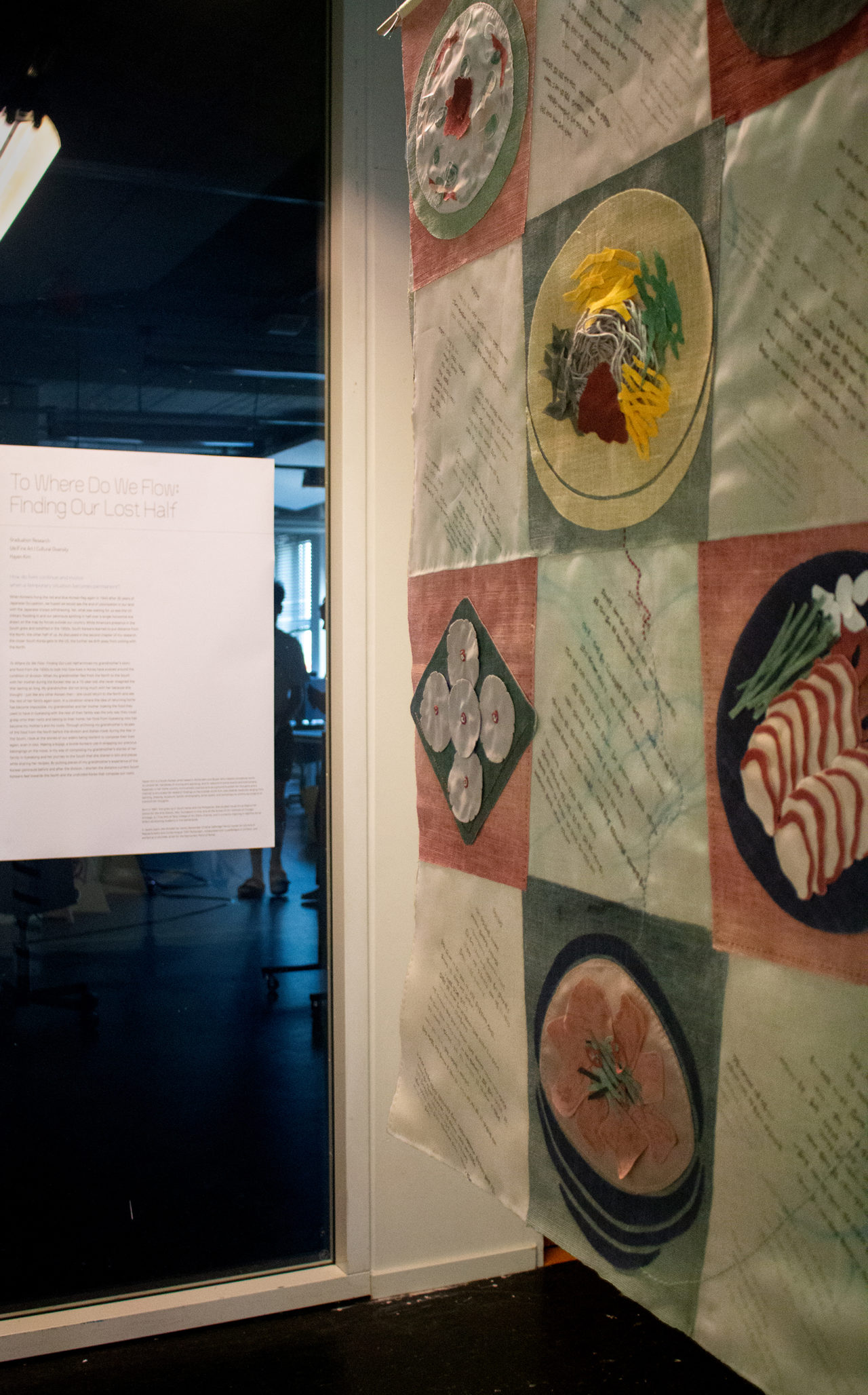To Where Do We Flow: Finding Our Lost Half

How do lives continue and evolve when a temporary situation becomes permanent?
When Koreans hung the red and blue Korean flag again in 1945 after 30 years of Japanese Occupation, we hoped we would see the end of colonization in our land with the Japanese troops withdrawing. Yet, what was waiting for us was the US military flooding in and our peninsula splitting in half over a single horizontal line drawn on the map by forces outside our country. While America’s presence in the South grew and solidified in the 1950s, South Koreans learned to put distance from the North, the other half of us. As discussed in the second chapter of my research, the closer South Korea gets to the US, the further we drift away from uniting with the North.
To Where Do We Flow: Finding Our Lost Half archives my grandmother’s food from the North before the division – what she made to belong to her old home in Gyeseong before the Korean War – and emancipates her journey to the South during the 1950s. It looks into how lives in Korea have evolved around the condition of division and shortens current South Koreans’ emotional distance towards the idea of an undivided Korean peninsula. When my grandmother fled from the North to the South with her mother during the Korean War as a 15-year-old, she never imagined the War lasting so long. My grandmother did not bring much with her because she thought – just like any other Korean then – she could return to the North and see the rest of her family again soon. In a condition where the idea of returning home has become impossible, my grandmother and her mother making the food they used to have in Gyeseong with the rest of their family was the only way they could grasp onto their roots and belong to their home; her food from Gyeseong now has become my mother’s and my roots. Through archiving my grandmother’s recipes of the food from the North before the division and dishes made during the War in the South, I look at the stories of our elders being resilient to compose their lives again, even in loss. Making a bojagi, a textile Koreans use in wrapping our precious belongings on the move, is my way of composing my grandmother’s stories of her family in Gyeseong and her journey to the South that she shared in bits and pieces while sharing her recipes. By putting pieces of my grandmother’s experience of the Korean peninsula before and after the division, I shorten the distance current South Koreans feel towards the North and undivided Korea that compose our roots.





To read more about this research and practice project, please see www.towheredoweflow.com
Hayen Kim is a South Korean artist based in Rotterdam and Busan who creates conceptual works to unravel her narratives of moving and adjusting, and to respond to social events and phenomena, especially in her home country. Kim’s artistic practice acts as a ground to polish her thoughts and a channel to enunciate her research findings to the outside world. Kim uses diverse mediums ranging from painting, drawing, sculpture, textile, photography, artist books, and workshops to communal projects to transmit her thoughts.
Born in 1997, Kim grew up in South Korea and the Philippines. She studied Visual Art at Walnut Hill School for the Arts (Natick, MA), foundation in Fine Arts at the School of Art Institute of Chicago (Chicago, IL), Fine Arts at Paris College of Art (Paris, France), and is currently majoring in (de)Fine Art at Willem de Kooning Academy in the Netherlands.
In recent years, she showed her works Remember 0146 at Delbridge Family Center for the Arts in Massachusetts and Conforming at TENT Rotterdam, collaborated with LoveRePaper in Incheon, and worked as a volunteer artist for the Democratic Party of Korea.